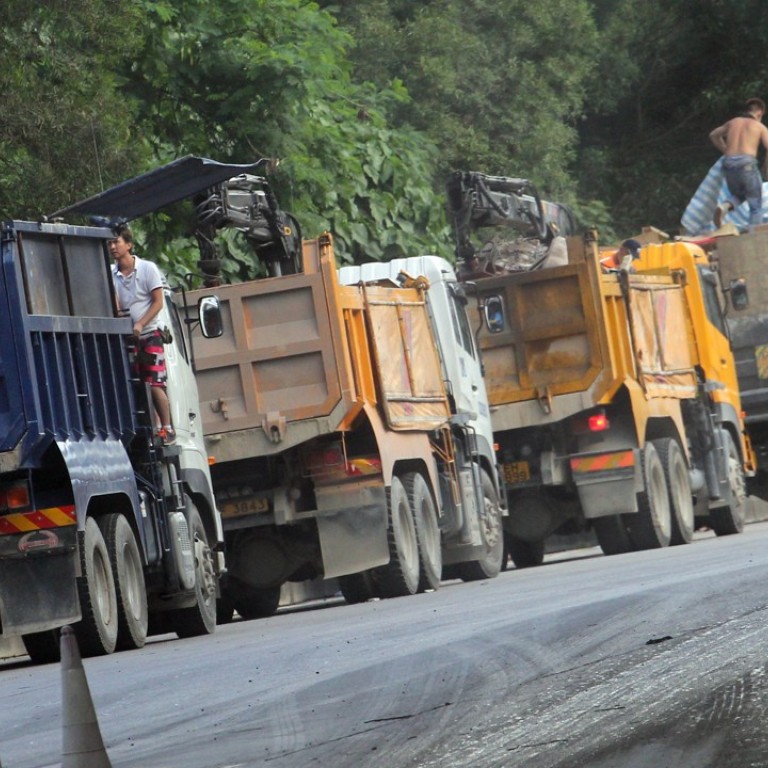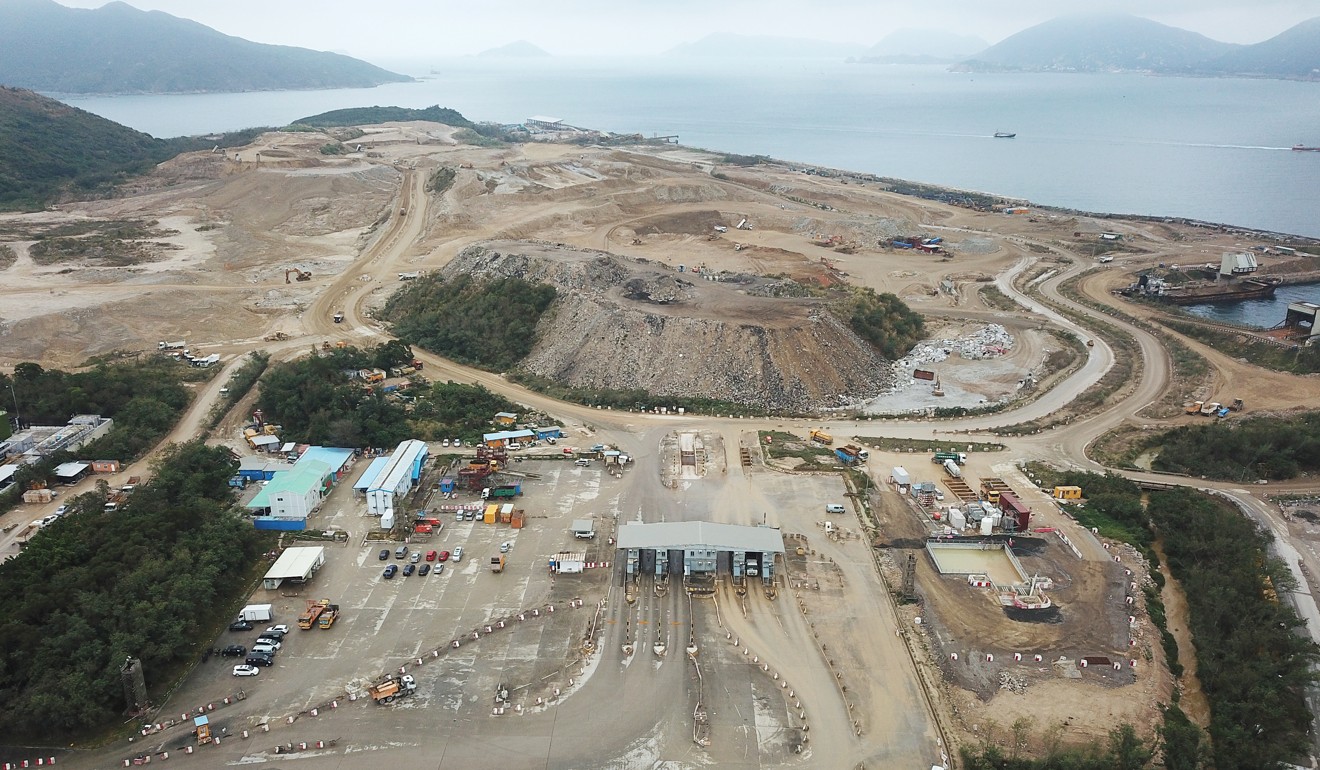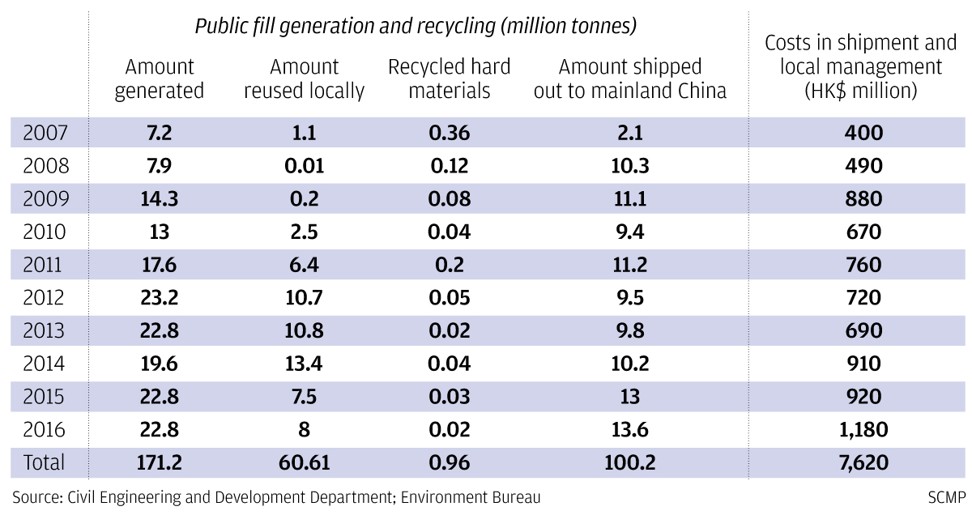
Hong Kong spent billions sending construction waste to mainland China instead of reusing it in local projects
City generated 171 million tonnes of building waste, but just a third of that was used in local projects over the past decade
Hong Kong spent HK$7.6 billion (US$968 million) over the past decade disposing of construction waste it could have reused for reclamation and building projects, the Post has discovered.
Instead of recycling the material locally, a substantial amount of the waste has been shipped to mainland China and is being used for reclaiming thousands of hectares of land in neighbouring Guangdong province.
Now, scholars and environmentalists are warning of a “severe case of overflowing”, and urging the city to change its ways, as demand across the border for Hong Kong’s waste dwindles, while development locally continues to increase and the government is looking at large-scale reclamation to ramp up land supply for housing.
More construction waste sent to mainland China than to city’s own facilities in 2017
The city generated some 171 million tonnes of what is known as public fill, which includes recyclable materials such as sand, soil, bricks and concrete, between 2007 and 2016.
But Hong Kong reused just 35 per cent of the materials in that time.
Another 60 per cent was shipped to the mainland starting in 2007, to be used by developers as they look to reclaim 1,040 hectares of land in Taishan City, Guangdong.
The remaining waste was stored in Hong Kong’s two public fill banks in Tseung Kwan O and Tuen Mun, which have a total storage capacity of 19.2 million tonnes.

Public fill accounts for about 93 per cent of all the construction waste produced in the city.
Experts predict that in the next decade the city will generate more construction waste than it can handle, but with fewer options for disposing of it.
Construction waste may be greener, smarter way to cover up city’s landfills
“The situation is really severe,” said Poon Chi-sun, chair professor of Polytechnic University’s department of civil and environmental engineering.
“Hong Kong still has many infrastructure and urban redevelopment projects that will generate a lot of construction waste, most of which is totally reusable.”
Hong Kong still has many infrastructure and urban redevelopment projects that will generate a lot of construction waste
About 90 per cent of the city’s public fill contains soft materials such as sand and soil, which are best used for reclamation and other filling purposes.
Officials have said one main reason for the low local reuse rate was a lack of large-scale reclamation projects in recent years.
The government is in the middle of a public consultation on how to source more land to plug a predicted shortage of 1,200 hectares for the city’s housing and economic development in the next three decades. Reclamation outside Victoria Harbour is one of 18 options that the government favours.
However, it is debatable as to whether large reclamation projects would use a lot of public fill.
But according to a spokeswoman for the Highways Department, only about 11 per cent of about 55 million tonnes of reclamation materials used in the project came from public fill.
“This is quite ridiculous and wasteful,” said Edwin Lau Che-feng, executive director of The Green Earth, a Hong Kong-based environmental advocacy group.
This is quite ridiculous and wasteful
“No environmental group wants to see a lot of reclamation projects, but if such projects are already ongoing, the government should make use of as much local construction waste as possible.”
Poon said traditional reclamation materials, such as marine sand, were not only costly due to a global shortage, but the extraction of it from the seabed would also lead to further pollution of the sea.
Theoretically, he said, a project could use mostly public fill for reclamation, but the government was unwilling to do so because it would take several months longer for it to consolidate and settle.
“The government can take years to plan a project, but when the construction starts, it wants to finish it as soon as possible,” he said. “This cannot justify reclamation as a solution to Hong Kong’s construction waste problem.”
‘Construction waste was used in Sha Tin-Central rail link station – but not for wall’
However, neither the Civil Engineering and Development Department nor the Airport Authority disclosed how much public fill would be used in these two projects, only saying the government would use such materials “as far as possible”.
Besides the soft reclamation fill, about 10 per cent of Hong Kong’s public fill contains hard materials such as rocks, broken concrete, bricks and tiles, which can be recycled into aggregates for various purposes such as road paving blocks, road bases, concrete and fortification materials.
But the Post found that successfully recycled hard materials only accounted for 0.6 per cent of the public fill generated between 2007 and 2016.
A government spokeswoman said “only a small proportion” of the hard materials was suitable for making aggregates, but noted that since last year the department had required all public works to give priority to recycled aggregates, and had encouraged private works to source such materials.
We understand the importance of recycling construction waste ... but there just isn’t much incentive for companies to do so
Poon, however, countered that most hard materials could be recycled into aggregates, citing Germany as an example, where he said 80 per cent of the hard waste materials was recycled.
Eddie Lam Kin-wing, vice-president of the Hong Kong Construction Association, which has more than 300 member companies, said local firms were reluctant to use recycled aggregates because it required extra testing and approval by quality-control consultants, and the cost of these recycled materials was higher.
“We understand the importance of recycling construction waste, and we have set up an information sharing website for our members, but there just isn’t much incentive for companies to do so,” Lam said.
Poon suggested Hong Kong should learn from countries such as Britain, which taxes companies for using natural aggregates so that using recycled ones is more economically viable.
If the government did not do anything to raise the recycling rate, he said, the city could face a serious problem as its ageing neighbourhoods meant more urban redevelopments would be needed, and building, demolition or renovation was the main source of hard construction waste.
Last year, the city had some 30,000 buildings aged 50 years or older, and the number was set to multiply in the coming years.


